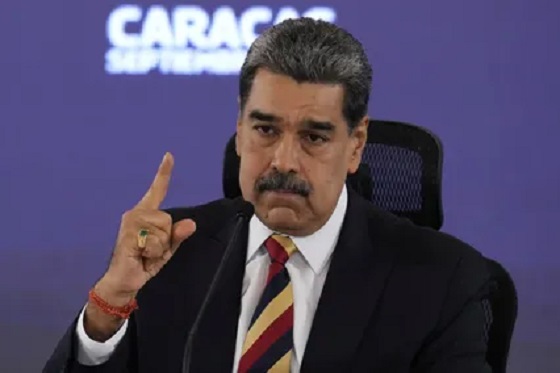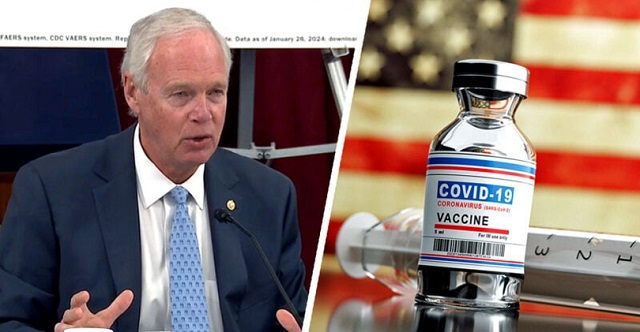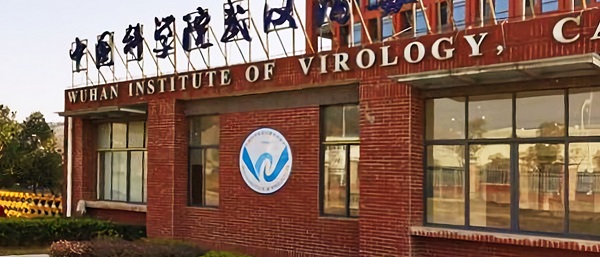International
Keir Starmer becomes new UK prime minister as Nigel Farage finally elected to Parliament

From LifeSiteNews
By Frank Wright
Britain’s Labour Party has achieved a historic majority of over 150 seats, following a general election with the second lowest voter turnout in almost 140 years, while Nigel Farage’s party took 4 million votes but only 4 seats in Parliament.
Britain has a Labour government with a historic majority of over 150 seats, following exit poll projections of the U.K. general election. Thursday’s July 4 vote saw the second lowest voter turnout since 1885, with only an estimated 60 percent of registered voters taking part.
Former lawyer Sir Keir Starmer is set to become prime minister when announced by King Charles today, having purged his party of left-wingers in a successful move to mimic the electoral success of Tony Blair.
4 seats for 4 million votes
Current projections say the Labour Party won 9.6 million votes and an estimated 412 seats, with the Conservative Party second with 6.6 million votes and 120 parliamentary seats. Nigel Farage’s Reform UK took over 4 million votes, making his insurgent populist party the third force in U.K. politics by the popular vote.
Due to the workings of the British electoral system, however, Reform gained only four seats at the time of writing. This result still sees Nigel Farage finally enter Parliament as the MP for Clacton, having failed to win in previous elections.
Hopes for “zero seats” for a Conservative Party widely acknowledged to have conserved nothing were dashed, yet the Labour landslide – the greatest since 1945 – sees the Tories lose over 250 seats in what could be their worst result since their party was founded in 1830.
Winner takes all
Many constituencies saw Reform overtake the Tory vote. Conservative voters who turned to Reform have cost the Tories an estimated 124 seats in splitting the vote. This follows changes to election boundaries made last year.
The U.K.’s constituency boundaries were changed in 2023 to reflect population growth within them, and to arguably “equalize” the numbers of people voting per MP. The causes and demography of this population growth were not explained in reports, nor did any address the obvious mismatch between Welsh, Scottish, and English constituencies.
While the extreme left-wing Scottish National Party lost 37 seats, the eight it held onto were returned by only 666,000 votes. In Wales, the equally progressive Plaid Cymru won four seats with only 194,000 votes cast for the Welsh “nationalist” party.
As a result of this system, the liberal-globalist Labour Party will enjoy a record majority on a vote share lower than their right-liberal “conservative” and right-populist opponents.
Lower vote share, record low turnout?
The former leader of the Labour Party Jeremy Corbyn won his seat as an Independent in Islington. In the last election he contested as leader, he won 40 percent of the vote – but narrowly lost to Conservative leader Theresa May in 2017.
The current Labour vote share is expected to be lower than that won by Corbyn, at around 36 percent of votes cast. Yet the overall number of votes is, according to one expert, expected to be one of the lowest in decades.
As the Hindustan Times reported, “Prof. Sir John Curtice, the psephologist who led the team that produced the exit poll, indicated that early results align with expectations of a low voter turnout.”
Speaking to the BBC, Curtice explained: “We may discover we are heading towards one of the lower turnouts of general elections in postwar electoral history.”
Curtice warned that the low turnout he expected was due to voter indifference – to what George Galloway has called the “uniparty” politics of the U.K.
“The Left are globalists now” said Galloway in a March 22 podcast, in which he called for an exit from NATO and condemned the U.K.’s involvement in the wars in Ukraine and in Gaza.
Curtice appeared to agree with the sentiment about establishment politics, concluding there was “not that much difference between Conservative and Labour in much of what they were offering the electorate.”
In recent days, former U.K. Prime Minister and Foreign Secretary David Cameron admitted on camera that the British policy on the Ukraine war was “fixed,” and that no change would come with a Labour victory. The power to change foreign policy is clearly outside that offered to the British by liberal democracy.
Whilst Galloway himself certainly offered a different choice, he lost his Rochdale seat to the Labour candidate. Parliament will be far less interesting due to his absence.
Notable losses
Parliament has lost its champion of the vaccine injured, however, as Andrew Bridgen lost his seat in a four-way race won by Labour. Other absences include former ministers and high profile Tory MPs.
Former Prime Minister Liz Truss lost her seat, as did Zionist Defence Minister and former B’nai B’rith youth leader Grant Shapps. Well known Catholic Jacob Rees-Mogg was defeated in Somerset. Many high profile Tories are now out of Parliament, with the former Northern Ireland Minister Steve Baker saying “Thank God I’m a free man” on losing his seat in Wycombe.
What the future holds
Labour under Starmer has promised a “mission-driven” government. This mission appears to be strongly globalist in flavor.
Starmer has removed candidates from his party who held strong left-wing and Israel-critical positions. He is widely believed to have moved the party to the “center” to secure a mandate to govern.
The program he has in store does not resemble an abrupt transition to socialism. There is talk of taxing non-state schools, and rumors Starmer will increase income and inheritance tax – to redistribute the wealth of the British to a voter base expanded by over 11 million immigrants since 2011.
A further 6 million are expected in the next 10 years.
The Labour Party under Starmer has a plan to “Change Britain.” This plan is expected to go beyond its 10 headline promises to transfer state power to globalist-aligned NGO-like structures and other bodies independent of Parliament, providing for a permanent continuity of policy. Labour under Starmer has been as fastidious in “purging” anyone who stands for its founding principles, as has the defeated Conservative Party.
The uncertain future of liberal globalism
What is notable about this landslide is that it comes as a result of voter disaffection, with a lower turnout overall, and mounting exasperation with the political settlement of “uniparty” politics.
As Europe – and especially France – risks political instability in its attempts to lock populists out of power, the future for Britain looks less like socialism and more like the last hurrah of business as usual.
Populists are now in Parliament, albeit in a capacity which fails to reflect their level of support across the country. It is their voice which will provide a meaningful opposition to the liberal-globalist agenda, whose power internationally is in terminal decline.
The same can be said of the Labour Party, whose power is purchased in a context of exasperation with establishment politics. This victory is the verdict of a broken system. How long it can prevail against the tide of the times is the question.
Daily Caller
‘Almost Sounds Made Up’: Jeffrey Epstein Was Bill Clinton Plus-One At Moroccan King’s Wedding, Per Report


From the Daily Caller News Foundation
Former President Bill Clinton personally asked to bring Jeffrey Epstein and Ghislaine Maxwell as guests to the Moroccan King Mohammed VI’s 2002 wedding, a move that unsettled Clinton’s own aides, the New York Post reported Thursday.
Clinton requested permission to include Epstein and Maxwell at the royal wedding in Rabat despite neither having any official relationship with the Moroccan royal family, the Post reported. Sources told the outlet that Clinton’s request was viewed internally as inappropriate and has quietly circulated in Democratic circles for more than two decades.
“[Clinton] brought them as guests to a king’s wedding. I mean, it almost sounds made up,” one source familiar with the matter told the outlet. “How many times in your life have you been invited as a guest of a guest at a wedding?”
As a nonprofit, we are dependent on the generosity of our readers.
Please consider making a small donation of any amount here.
Thank you!

Clinton traveled to Morocco with Epstein and Maxwell aboard Epstein’s private jet, dubbed the “Lolita Express,” according to the Post. Chelsea Clinton attended separately, and then-Sen. Hillary Clinton remained in Washington due to her schedule.
“[Former First Lady] Hillary [Clinton] was in the Senate, so she couldn’t go. Chelsea very much wanted to go, and the president very much wanted to go,” a second person told the outlet. “The idea that they would take [Epstein] was a head-scratcher. But nonetheless, the Clinton office moved forward and made this request … to bring these two guests, and that’s what happened.”
Once in Rabat, Clinton, Epstein and Maxwell were seated with King Mohammed VI during the black-tie wedding dinner, sources said. At one point, Chelsea Clinton requested a group photograph that included her father, Epstein and Maxwell.
Maxwell is currently serving a 20-year federal prison sentence for sex trafficking conspiracy and related offenses. Epstein died in jail in 2019 while awaiting trial on federal sex trafficking charges. Their crimes were not publicly known at the time of the wedding.
The Clintons continue to downplay the extent of their past relationship with Epstein, maintaining that they cut off contact with him in 2005, three years before he pleaded guilty to state sex crimes in Florida.
Clinton spokesman Angel Ureña previously told the outlet that Clinton took four trips aboard Epstein’s jet between 2002 and 2003 and denied that Clinton ever visited Epstein’s private island or residences.
“I don’t know how many times we need to say there was travel more than 20 years ago before he was cut off. Apparently, we need to one more time. But nice try,” Ureña said, according to the outlet.

Neither of the sources quoted by the New York Post said they believed Clinton was aware of Epstein trafficking or sexually abusing children, but did say the ex-president is downplaying his former links to both Epstein and Maxwell.
The Clinton Foundation did not respond to the Daily Caller News Foundation’s request for comment.
Both Bill and Hillary are scheduled to give depositions in January to the House Oversight and Government Reform Committee about their ties to Epstein. The Oversight Committee subpoenaed the Clintons in August, and Committee Chairman James Comer said that if the Clintons didn’t appear for depositions scheduled for Dec. 17 and 18 or arrange to appear for questioning in early January, then contempt charges would be pursued.
Photos released by Oversight Committee Democrats in December show Epstein with prominent figures, including President Donald Trump, Bill Clinton, Microsoft co-founder Bill Gates and Steve Bannon.
The Department of Justice is expected to release a new trove of documents related to the Epstein investigation Friday.
Crime
Brown University shooter dead of apparent self-inflicted gunshot wound

From The Center Square
By
Rhode Island officials said the suspected gunman in the Brown University mass shooting has been found dead of an apparent self-inflicted gunshot wound, more than 50 miles away in a storage facility in southern New Hampshire.
The shooter was identified as Claudio Manuel Neves-Valente, a 48-year-old Brown student and Portuguese national. Neves-Valente was found dead with a satchel containing two firearms inside in the storage facility, authorities said.
“He took his own life tonight,” Providence police chief Oscar Perez said at a press conference, noting that local, state and federal law officials spent days poring over video evidence, license plate data and hundreds of investigative tips in pursuit of the suspect.
Perez credited cooperation between federal state and local law enforcement officials, as well as the Providence community, which he said provided the video evidence needed to help authorities crack the case.
“The community stepped up,” he said. “It was all about groundwork, public assistance, interviews with individuals, and good old fashioned policing.”
Rhode Island Attorney General Peter Neronha said the “person of interest” identified by private videos contacted authorities on Wednesday and provided information that led to his whereabouts.
“He blew the case right open, blew it open,” Neronha said. “That person led us to the car, which led us to the name, which led us to the photograph of that individual.”
“And that’s how these cases sometimes go,” he said. “You can feel like you’re not making a lot of progress. You can feel like you’re chasing leaves and they don’t work out. But the team keeps going.”
The discovery of the suspect’s body caps an intense six-day manhunt spanning several New England states, which put communities from Providence to southern New Hampshire on edge.
“We got him,” FBI special agent in charge for Boston Ted Docks said at Thursday night’s briefing. “Even though the suspect was found dead tonight our work is not done. There are many questions that need to be answered.”
He said the FBI deployed around 500 agents to assist local authorities in the investigation, in addition to offering a $50,000 reward. He says that officials are still looking into the suspect’s motive.
Two students were killed and nine others were injured in the Brown University shooting Saturday, which happened when an undetected gunman entered the Barus and Holley building on campus, where students were taking exams before the holiday break. Providence authorities briefly detained a person in the shooting earlier in the week, but then released them.
Investigators said they are also examining the possibility that the Brown case is connected to the killing of a Massachusetts Institute of Technology professor in his hometown.
An unidentified gunman shot MIT professor Nuno Loureiro multiple times inside his home in Brookline, about 50 miles north of Providence, according to authorities. He died at a local hospital on Tuesday.
Leah Foley, U.S. attorney for Massachusetts, was expected to hold a news briefing late Thursday night to discuss the connection with the MIT shooting.
-

 Alberta2 days ago
Alberta2 days agoDanielle Smith slams Skate Canada for stopping events in Alberta over ban on men in women’s sports
-

 International1 day ago
International1 day agoTOTAL AND COMPLETE BLOCKADE: Trump cuts off Venezuela’s oil lifeline
-

 Crime2 days ago
Crime2 days agoThe Uncomfortable Demographics of Islamist Bloodshed—and Why “Islamophobia” Deflection Increases the Threat
-

 COVID-191 day ago
COVID-191 day agoSenator Demands Docs After ‘Blockbuster’ FDA Memo Links Child Deaths To COVID Vaccine
-

 Business21 hours ago
Business21 hours agoCanada Hits the Brakes on Population
-

 Daily Caller9 hours ago
Daily Caller9 hours ago‘Almost Sounds Made Up’: Jeffrey Epstein Was Bill Clinton Plus-One At Moroccan King’s Wedding, Per Report
-

 COVID-191 day ago
COVID-191 day agoChina Retaliates Against Missouri With $50 Billion Lawsuit In Escalating Covid Battle
-

 Energy2 days ago
Energy2 days agoLiberals Twisted Themselves Into Pretzels Over Their Own Pipeline MOU



